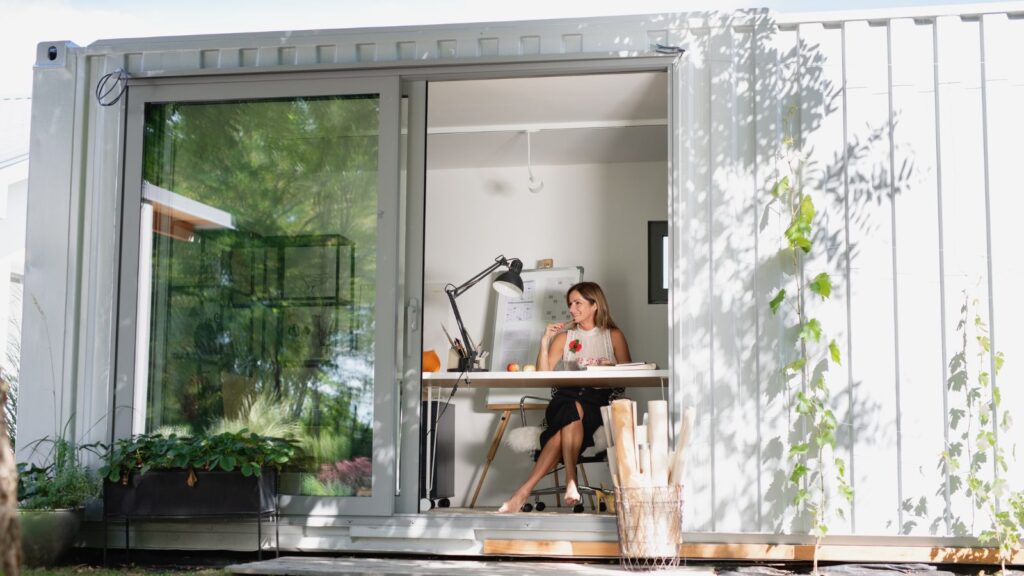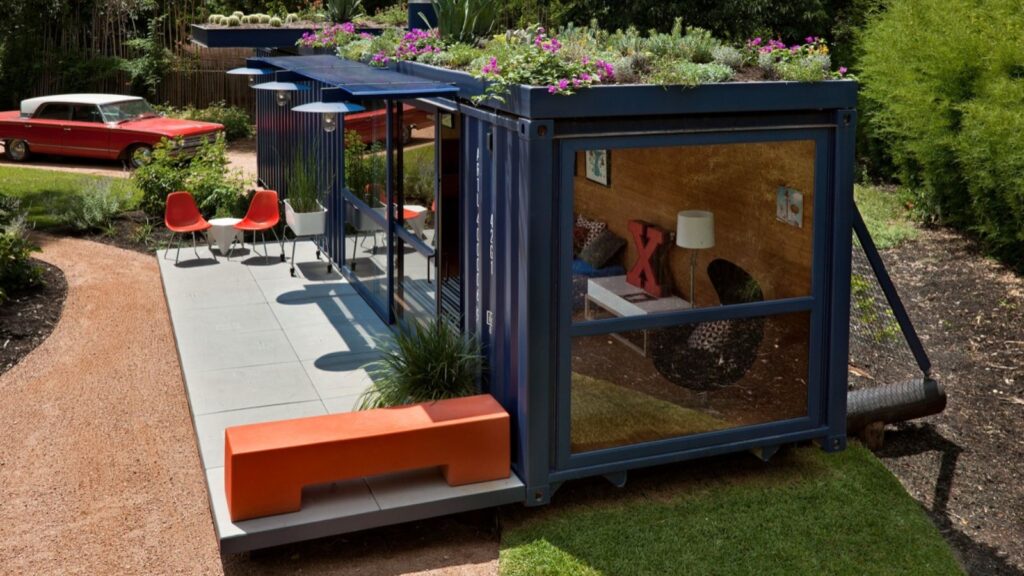When your shipping container arrives, it will look nothing like a house. To convert it into a usable living space, you’ll need to undertake many changes, including prepping the foundation, adding wall insulation, and establishing electrical connections. Check our blog on building a container home to learn more about these critical changes.
Even with these functional changes, your container may need to feel more snug. Poor design decisions can make your home feel claustrophobic and dark inside and out, giving it an industrial appearance. It is essential to carefully review shipping container design ideas before purchasing.
AVOIDING A CONSTRICTED SPACE
It’s critical to make the appropriate design choices to avoid constructing a shipping container home that feels too small and crowded. Fortunately, numerous methods exist to maximise the space within your container house.
CHOOSE A LARGER CONTAINER
If you’re thinking of designing a shipping container house, saving money by using a smaller container may be tempting. However, it’s essential to remember that a regular 20ft container only has 160 square feet of space, while a conventional 40ft container offers 320 square feet. Opting for a larger container will give you more working space on the floor. Another option to consider is using a high-cube container, which is a foot taller than standard containers and will provide you with a slightly higher ceiling. Check out our blog post to learn more about the different shipping container sizes available for homes.
INSULATE OUTDOORS
While insulation is a great way to protect your home from extreme temperatures and minimize humidity levels, it’s important to note that it can also lead to issues like corrosion, mould, and water damage. Another thing to consider is that insulation can take up valuable space inside your container. It’s best to wrap your container in cladding and add insulation outside to avoid this. This way, you can maintain your container’s protective layer against extreme weather while maximizing your interior space.
STACK YOUR CONTAINERS
Expanding your container home can be easily achieved by integrating another container. The beauty of shipping containers is that they can be stacked vertically and horizontally, allowing for a modular approach to designing a larger container home. This expansion method offers additional floor space, higher ceilings, and the potential to add levels on top of the existing structure.

If you taste modern style, there are plenty of creative ways to arrange your containers. Take a cue from this image one container is placed over another to create a floating second story. Or, for a unique look like California’s Starburst House, angle multiple containers together. If you’re considering building a container home Airbnb on the side, using additional containers to create an eye-catching structure is a wise choice. A shipping container home with a one-of-a-kind design will set your listing apart from other vacation rentals on the site, attracting more bookings that are anything but ordinary.
USE ADDITIONAL SPACE :

A different approach to creating more space with shipping containers is transforming them into secondary structures. For instance, you can build a garden shed made from a shipping container, which can be used to keep seasonal items like patio furniture and lawn care equipment. On the other hand, you can construct a work shed from a shipping container, where you can work on projects during your free time. Either shed design will enable you to store your belongings outside your main shipping container home, creating more space.
AVOIDING DARK INTERIOR :
Shipping containers typically lack natural light and can be pitch black when the main doors are closed. Consider making interior design adjustments to create a bright and warm atmosphere in your shipping container home.
INSTALL BIG WINDOWS :

Container Guest House by Poteet Architects
One easy way to enhance the interior design of your cargo container is by installing expansive windows. These windows allow natural light to flood the room, making it brighter and more inviting. Furthermore, they can create an illusion of increased square footage and open the space. Consider installing floor-to-ceiling picture windows and sliding glass doors along the container walls for best results. An excellent example of this design can be found in the Container Guest House in Texas, which Poteet Architects designed.
PAINT IT WHITE :
If you want to add brightness to your shipping container home, consider painting the walls white. This colour is known for reflecting light, unlike darker shades like black. By choosing white walls, you can reflect natural and artificial light, giving your home a bright and airy feel. Remember to select the right paint finish for your walls – a high-gloss, semi-gloss, or satin finish will reflect light much better than a matte finish.
AVOIDING AN INDUSTRIAL LOOK :
If you plan to build a home using shipping containers, avoiding giving it an overly industrial look is essential. It can make it seem like a cargo container rather than a cosy dwelling, and it might need to fit better with the surrounding homes. Consider incorporating some of these design ideas to make your shipping container home more attractive.
REPAINT IT :
The makers of shipping containers apply a marine-grade paint layer on the corrugated steel walls to prevent them from rusting too soon. You can give your shipping container house a new look by painting it with a fresh coat of paint in the colour of your preference. Ensure that you select a direct-to-metal, marine-grade colour for the job. For further information on painting shipping containers, please read our blog.
USE CADDING :
If you’re not keen on painting the exterior of your shipping container, you could use cladding instead. It is an excellent way to insulate the walls of your container. Various cladding materials are available depending on your budget and personal style. For example, wooden cladding can give your shipping container home a rustic and natural look. Proper design guidance lets you turn your container into a cosy and welcoming haven without feeling cramped, dark, or unfinished.
